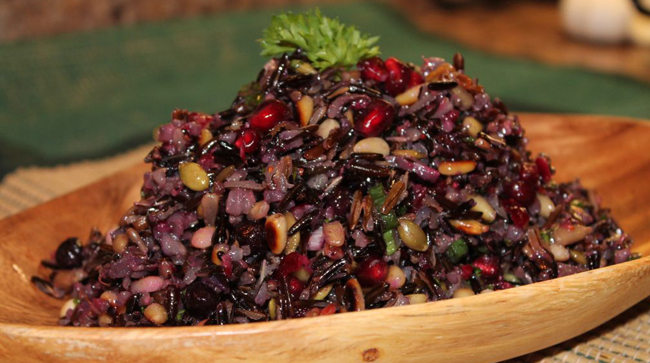Wild rice weapon in food war
By Jennifer Sinclair
Food has long been used as a weapon against First Nations.
Hunger and malnourishment are powerful tools — strong enough to make people submissive and even bring nations to their knees.
Henry Kissinger, former U.S. National Security Advisor, famously wrote: “Who controls the food supply controls the people.” Ultimately the U.S. adopted a policy of purposely using famine, hunger, and starvation as a means of controlling people in poorer nations throughout the 1970s.
This policy actually originated over a century earlier, when Americans and their Canadian cousins to the North decimated bison herds to starve First Nations out of the plains to make way for settlement. Children in residential schools often spoke of hunger, nutritional experimentations were conducted on them, and First Nations were forced to rely on southern food markets.
Control over our diets is almost complete.
We lie in sick-beds and wait for our next ration of Boost and we accept meals of processed (but affordable) junk foods that masquerade as nutrition to be purchased and served to our families.
There is a choice to make. Either we take control of our local food system and what we put on our tables or we can wait for researchers and government approved experts to tell us what supplements to take next.
In this column we can share knowledge of foods eaten in the past, how to find them today, and, best of all, how to eat them.
Wild Rice grows in clean, shallow, cold water which makes Northern Ontario and Manitoba prime regions for its stalks. It’s actually an annual aqua-grass called Zizania aquatica and is the only grain cereal indigenous to Canada.
It is very low in saturated fat, cholesterol and sodium and is also a good source of manganese, an essential trace mineral that is concentrated primarily in the bone, liver, pancreas, and brain has many benefits including to help maintain blood sugar levels and cholesterol metabolism.
Rich in the B vitamins – niacin, riboflavin and thiamine, as well as potassium and phosphorus – wild rice is a complete protein that contains all of the essential amino acids and is a whole grain that scores low on the glycemic index which makes it excellent for those concerned with sugar levels.
Unlike other grains, like wheat, oats, corn etc., wild rice in Canada remains virtually untouched by scientific processes and has a greater over-all nutritional value than the other grain-cereals.
The recipe I want to share with you is a salad that highlights wild rice, berries, and seeds found in Ontario and still grown, harvested, and consumed by First Nation communities.
Here is some information about wild rice and where to purchase it from a local First Nation producer:
http://community.eonpermaculture.ca/forum/wild-rice
http://nutritiondata.self.com/facts/cereal-grains-and-pasta/5752/2
http://www.canadianwildrice.com
http://www.wildrice.org/iwrawebsite/html/wildricehistory.html
Jennifer Sinclair left a career in social research and launched Better Than Grandma’s Bannock now called Kookum’s Kitchen. She lives in North Bay and is eager to share her knowledge, recipes, and flavours that mix indigenous ingredients with new foods from nations around the world. Drop her an email at kookumskitchen1@gmail.com



